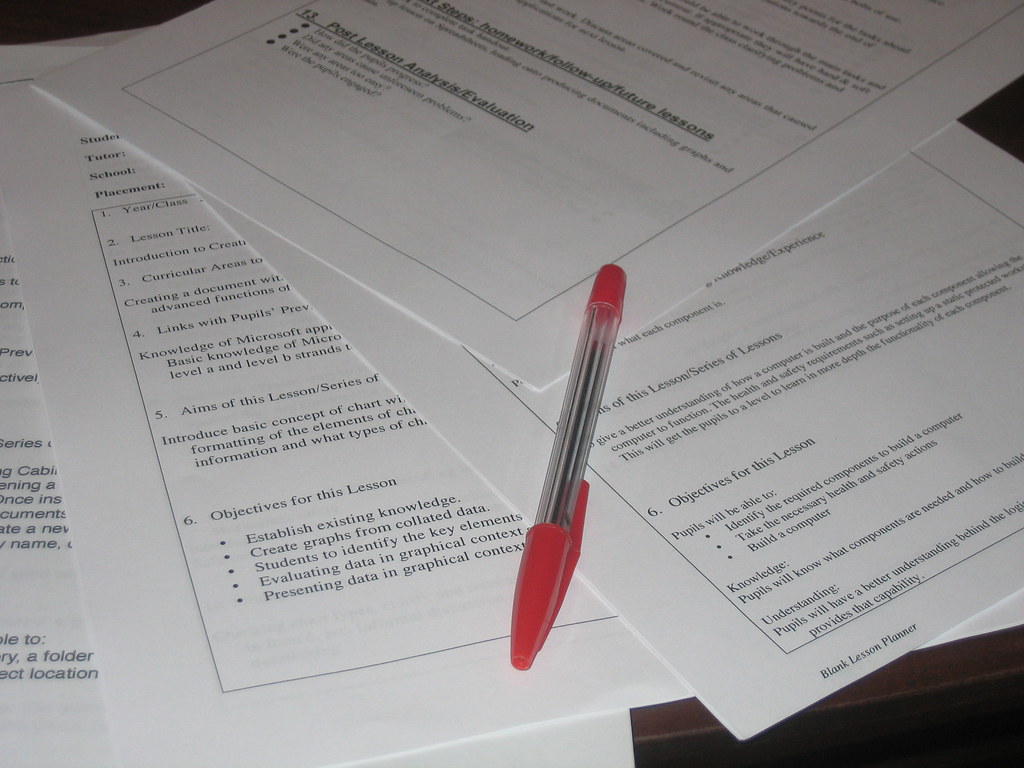How Are Lesson Planning and Student Assessment Enhanced by Technology?

Flickr David D. Muir
Teacher have come a very long ways today, from having their bosoms full of folders, notebooks, and other loose papers, to simply carrying a medium laptop computer to their classroom. What has changed so much since the time that I have graduated (twenty years ago), until the present time at hand. The one big word that answers this question is simply "technology". Technology such as computers, ipads, smartphones, etc., help teachers to better able organize their learning materials for the classroom.
In the past, many educators were no different from students when it came to finding and organizing their materials for in-class discussion and learning. Teachers were forced to go to the library and find books and other materials in order to find information to teach on. Well educators, say "thank you" to modern technology for making your teaching job a little easier these days. The internet has saved teachers much time just by being readily accesssible. Much of the information that's aids in their teaching can be found online. Certainly, this is more feasible than going to three or four physical places just to find information. Now global information can be accessed at their fingertips. So, what exactly does this mean for teachers. Well, for starters, it means that teachers have more time to actually devote to the students. If you ask a teacher about one of the greater challenges today, the teacher will probably say something like "I need more time to teach". There is just too much material and not enough time to teach it. (Maloy, O'Loughlin, Edwards, & Woolf, p. 82)
With this new technology, teachers are better able to manage their classrooms. Classrooms are less congested because teachers have more paperless materials to work with. This provides for a lot more space in the class to work with. This may seem trivial, but it makes a significant difference when you have more physical space to work with. The different softwares and technological tools not only help teachers to strategize their lessons, but it enhances the development of the lessons as well. Although there are benefits of having this new technology in the classrooms, it also presents other issues. "However, with the learning benefits of technology comes a host of new challenges for managing the classroom. The greatest of these is allowing students enough leeway to take advantage of the freer, exploratory mode of learning technology encourages while keeping the class productivity on-task. (Angela Watson, p.2) Teachers are also able to make student assessments and store them on their digital devices. This information can be saved in a good place, only accessible to the teacher, and this information is easily organized and can be sent out a lot quicker to the parents when necessary.
Tool Tech link:
Fair Test: The National Center for fair and Open Testing
www.fairtest.org
This site is a free online resource for keeping informed about testing policies and the wider education debates about the effectiveness of standardized test in assessing student learning.
Summary & Connection:
Today technology is making life a lot easier for teachers to plan there lessons and make assessments for their students. Because of the students information is put into one place, namely the computer, it makes things a lot more organized for the teacher. If the teacher is organized and ready to go, then it sets the atmosphere for a greater learning environment because teacher and students are in a better position to learn in a more organized fashion.
Works Cited:
Maloy,R., O'Loughlin, V., Edwards, R., Sharon, A., & B.P. Woolf, (2011). Transforming Learning With New Technologies. Boston, MA: Pearson.
Watson, A. The CornerStone; Technology & Classroom Management, n.d., Web Jan 31, 2014
http://thecornerstoneofteachers.com/free-resources/technology-integration/tech-classroom-management

 As we look at the widespread use of computers and digital electronics today, many of these devices have already or are beginning to infiltrate the classroom enviornment. Yet, there are still many obstacles and challenges to overcome before "computer-based technologies" are the stars of the classroom.
As we look at the widespread use of computers and digital electronics today, many of these devices have already or are beginning to infiltrate the classroom enviornment. Yet, there are still many obstacles and challenges to overcome before "computer-based technologies" are the stars of the classroom. 